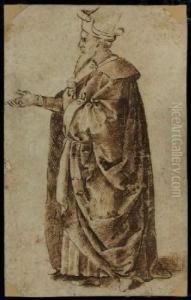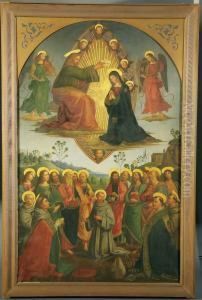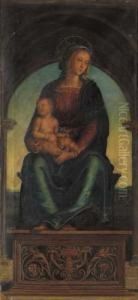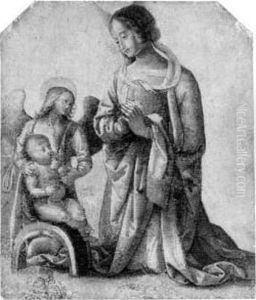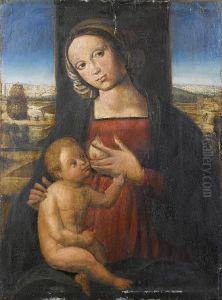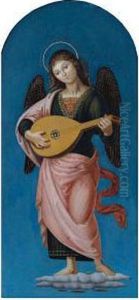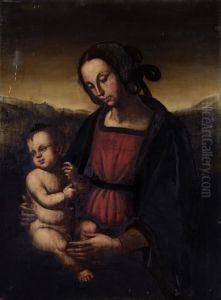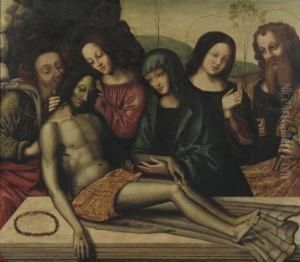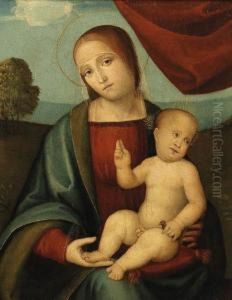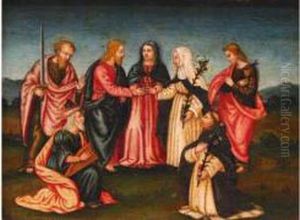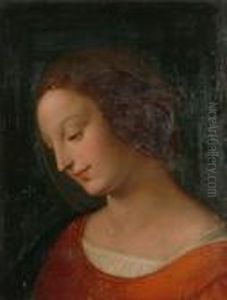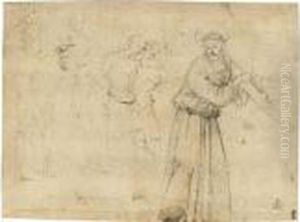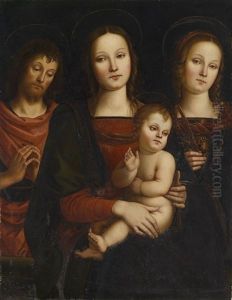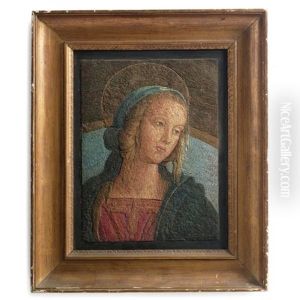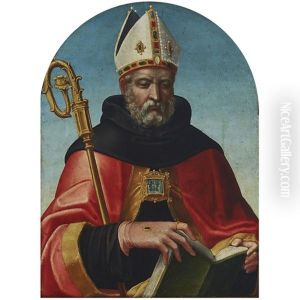Pietro Perugino Paintings
Pietro Perugino, born Pietro Vannucci, was an Italian Renaissance painter of the Umbrian school, who developed some of the qualities that found classic expression in the High Renaissance. Hailing from Città della Pieve, Umbria, his precise birthdate is unknown, but it is believed to be around 1446. Perugino was initially a pupil of Piero della Francesca and later studied under Andrea del Verrocchio in Florence, where he would have worked alongside Leonardo da Vinci.
Perugino's work was known for its serene and pious expression, which was achieved through harmonious composition and the use of clear, bright colors. One of his most famous works is the 'Christ Giving the Keys to St. Peter', painted for the Sistine Chapel in Rome. This piece exemplifies his skill in perspective and is a fine example of spatial harmony in Renaissance painting.
In the late 15th century, Perugino was one of the most sought-after artists in Italy. He ran a successful workshop and had numerous pupils, the most famous being Raphael, who would later surpass his master in fame. Through his teaching, Perugino played a significant role in the development of the Renaissance style, particularly in central Italy.
Despite his early success, Perugino's style eventually fell out of favor as the High Renaissance progressed. His adherence to an increasingly archaic form of painting was overshadowed by the innovative works of younger artists like Raphael, Michelangelo, and Leonardo. By the time of his death in 1523, Perugino's work was deemed old-fashioned, and his reputation had declined. Nevertheless, his contribution to Italian art is significant, and his works are still admired for their grace and clarity. Perugino’s legacy lives on, and he is remembered as an important bridge between the Early and High Renaissance periods.
